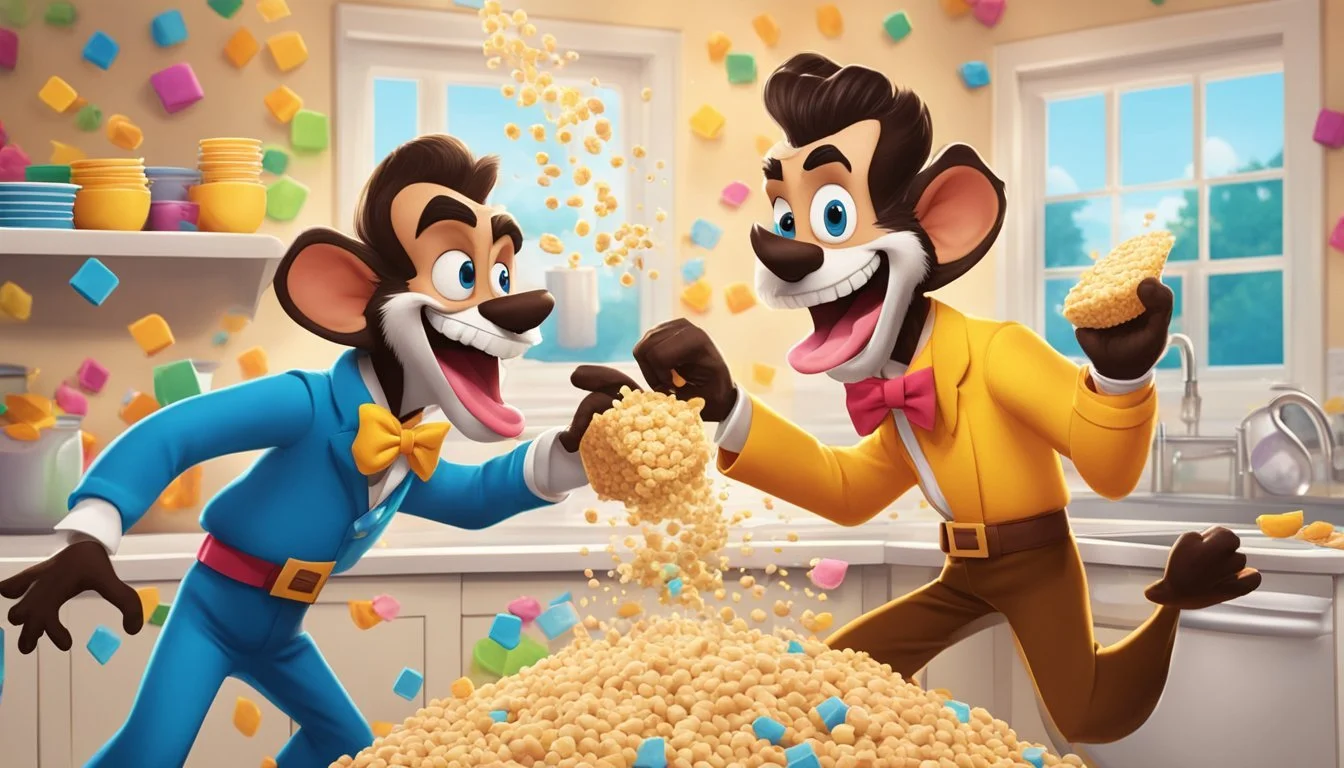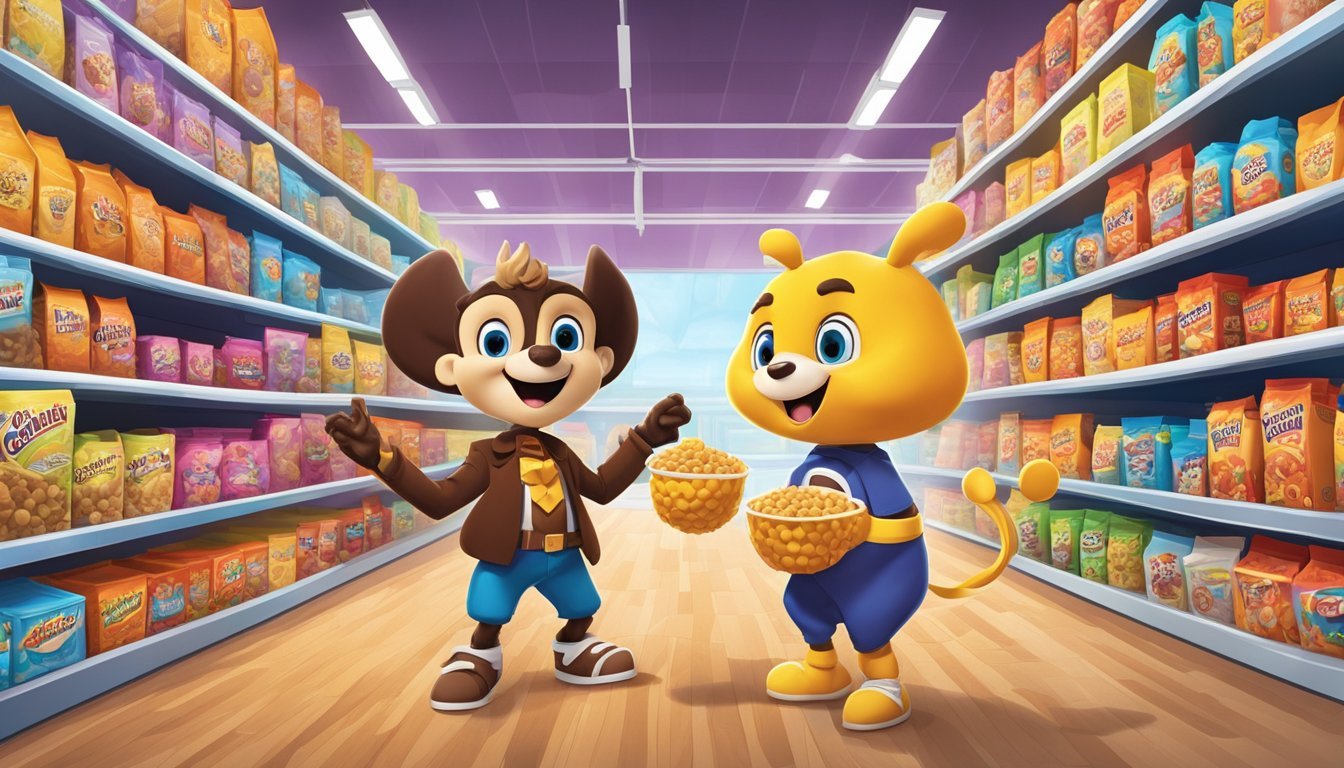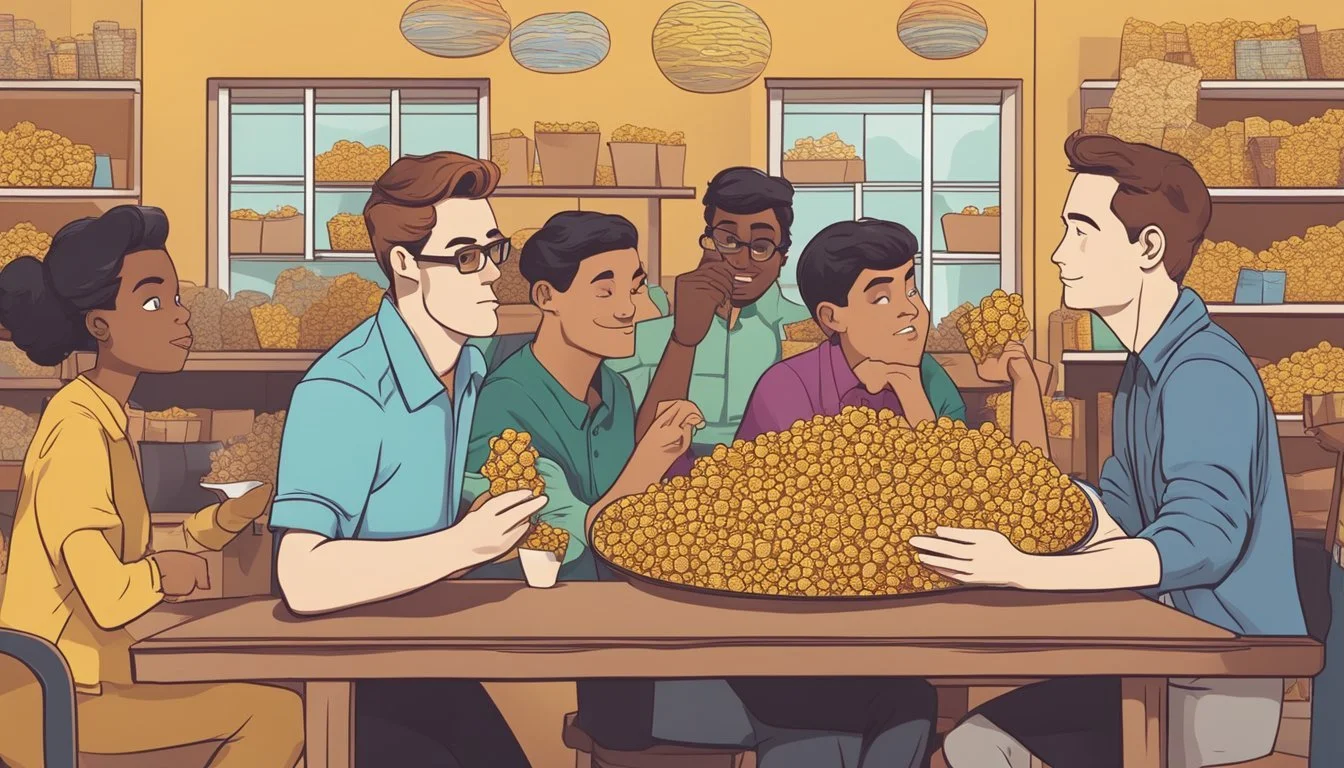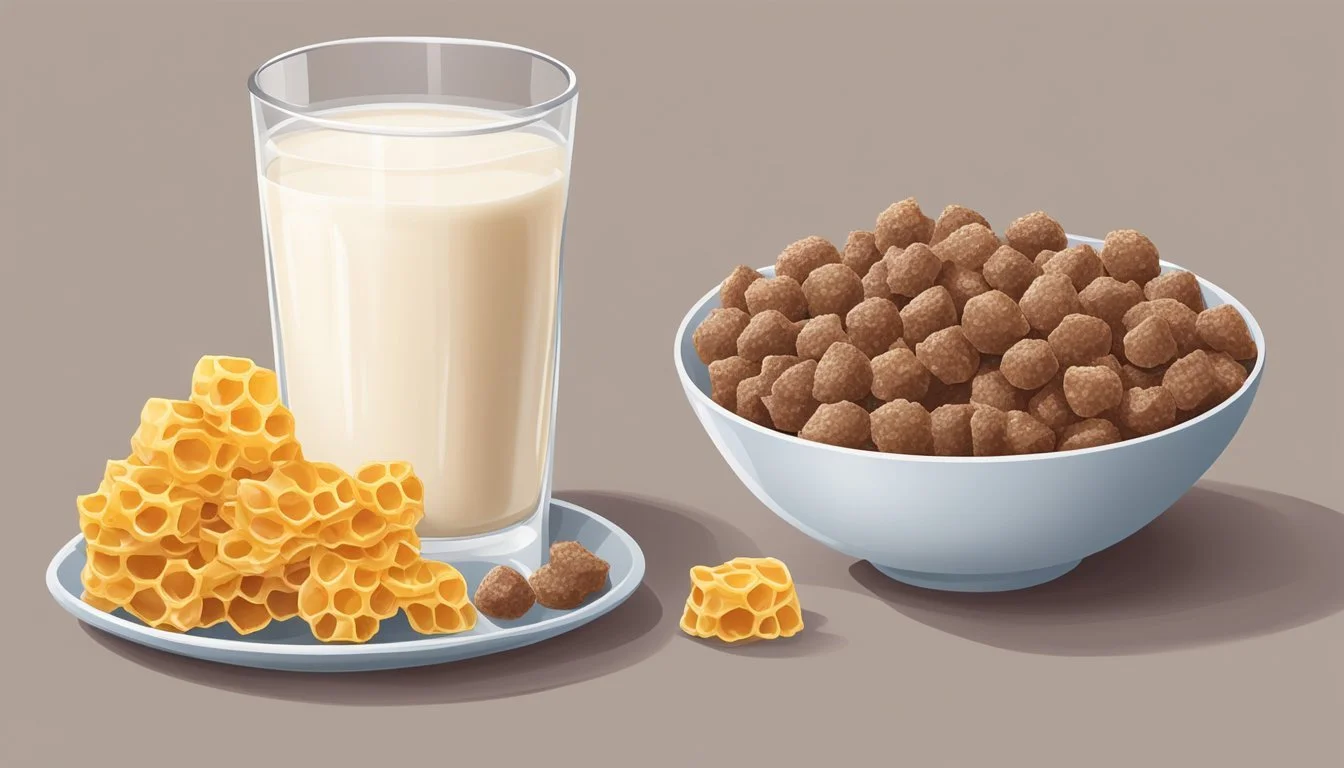Count Chocula vs Honeycomb
A Breakfast Cereal Showdown
This Article is Part of Our Breakfast Cereal Guide with Details on Count Chocula Nutrition and Honeycomb Nutrition
When it comes to choosing between Count Chocula and Honeycomb for breakfast, health-conscious consumers have a lot to consider. Count Chocula offers more vitamins and minerals compared to Honeycomb, particularly in iron and a range of B vitamins. However, Honeycomb has its own unique advantages, including a higher content of Vitamin D.
Despite their differences in nutrient profiles, both cereals have one thing in common: they are favorites among children and nostalgic adults alike. Count Chocula is loved for its rich chocolate flavor and playful count mascot, while Honeycomb boasts a sweet, honey-flavored crunch that many find irresistible.
Choosing the healthier option might depend on specific dietary needs, such as iron intake or Vitamin D supplementation. Whether you're drawn to the spooky fun of Count Chocula or the classic taste of Honeycomb, there's no denying that each cereal has carved out a special place in the breakfast aisle.
Historical Background
Count Chocula and Honeycomb cereals have unique backstories that highlight their origins and transformations over the decades, reflecting the broader trends in breakfast cereal history.
Origins of Count Chocula
Count Chocula first appeared in March 1971 as part of General Mills' introduction of the Monster Cereals line. The character, a chocolate-loving vampire with cartoonish fangs and a grin, was designed to attract children with its sweet flavor and spooky theme.
This cereal quickly became iconic, not only due to its flavor but also through innovative marketing campaigns. In the 1980s, ads began integrating clips from old horror movies, further cementing Count Chocula's place in pop culture. Despite some controversial ad choices, such as the brief live-action portrayal of Chocula, it has maintained a lasting fan base.
Evolution of Honeycomb
Honeycomb cereal was introduced by Post in 1965, offering a unique honey-flavored taste that set it apart from other cereals. Its innovative hexagonal shape and crispy texture became distinguishing features.
Over the years, Honeycomb's recipe and marketing strategies evolved to adapt to changing consumer preferences. While maintaining its core flavor, the cereal has seen various promotional tie-ins and character mascots, such as the Crazy Craving creature introduced in the 1990s.
Despite competition and the changing cereal market, Honeycomb has retained its identity and remains a staple in many breakfast routines.
Nutritional Profile
Count Chocula and Honeycomb cereals differ significantly in their nutritional profiles, particularly in their vitamin and mineral content, sugar levels, and serving calorie counts.
Count Chocula's Nutritional Information
Count Chocula is notable for its high vitamin and mineral content. It is particularly rich in Iron, Zinc, Vitamin B vitamins, and Calcium.
The cereal provides 110 calories per serving. Iron coverage per serving meets 103% of the daily need, making it a considerable source of this mineral.
Each serving contains 9 grams of sugar, making 33% of the cereal’s weight sugar. Protein content is modest at about 1 gram per serving.
Fiber is limited, with only 1 gram per serving. It also contains 130 mg of sodium and very low amounts of saturated fat (0.2 grams).
Honeycomb's Nutritional Facts
Honeycomb's nutritional profile contrasts with Count Chocula’s in several key areas.
It is lower in vitamins and minerals but does boast a significant amount of Vitamin D.
The cereal generally provides fewer calories per serving compared to Count Chocula, but information on specific numbers is varied. Sugar content is also lower compared to Count Chocula, and fiber and protein levels are minimal, similar to its counterpart.
Additionally, Honeycomb contains certain micronutrients that are beneficial, but lacks the comprehensive vitamin array found in Count Chocula.
While not as rich in Iron or other B vitamins, it makes a notable contribution to daily Vitamin D intake.
Cereal Characteristics
Count Chocula and Honeycomb cereals each have distinct characteristics that set them apart in taste, texture, serving size, and packaging. Chocolate and honey flavors play significant roles in their profiles, along with notable differences in design and nutritional content such as grams of sugar.
Texture and Taste Comparison
Count Chocula features a rich chocolate flavor with a crunchy texture. The cereal pieces are designed to replicate miniature chocolate bats, adding visual appeal. It often includes marshmallow bits for an extra sugary crunch, which can appeal to children and those with a sweet tooth.
In contrast, Honeycomb cereal has a honey-flavored taste and a distinctive, airy texture. The pieces are shaped like hexagons, designed to look like honeycombs. This cereal offers a satisfying crunch but is lighter and less dense compared to Count Chocula, making it a different eating experience.
Serving Size and Packaging
A standard serving size for Count Chocula is around 27 grams. The packaging is often themed with seasonal or character-based designs to attract younger audiences. The box typically highlights the chocolate flavor and includes nutritional information prominently.
Honeycomb's serving size is approximately 30 grams. Packaging design often emphasizes the honey taste and the unique shape of the cereal. It uses bright colors and simple graphics to appeal to families. The box also places significant focus on the low sodium content and the cereal's fortified vitamins and minerals.
Both cereals come in various box sizes, allowing for flexibility in purchase based on family size or individual consumption needs.
Cultural Impact
Count Chocula and Honeycomb have both left a significant mark on the cereal landscape. Their mascots have become household names, and their marketing strategies have integrated into popular culture, particularly around Halloween.
Iconic Brand Mascots
Count Chocula introduced its mascot, a charming vampire, who became a symbol of the spooky season. The vampire, along with other monster-themed cereals like Franken Berry and Boo Berry, stood out due to their unique designs and character backstories. The Count Chocula mascot was known for his catchy catchphrases and became a staple in Halloween-themed marketing.
Honeycomb’s mascot, initially a cowboy named Honeycomb Kid, appealed to a different demographic. Over time, the mascot evolved, including a memorable transformation into Honey Monster. Each iteration aimed to capture the adventurous spirit, reaching audiences through engaging television commercials and colorful packaging.
Advertising and Marketing Strategies
Both cereals employed distinctive advertising and marketing strategies. Count Chocula’s advertisements often featured animated segments with a Hollywood flair, emphasizing the spooky and fun elements of the character. These commercials typically aired around Halloween, embedding the brand into the seasonal festivities. Count Chocula even "went to Hollywood" in some ads, showcasing its appeal beyond just food.
Honeycomb, on the other hand, highlighted adventure and excitement. Commercials often depicted kids navigating elaborate, adventure-filled scenarios where Honeycomb cereal provided the necessary energy. The brand positioned itself as the cereal of choice for active and playful children, utilizing energetic and dynamic marketing techniques.
Seasonal Variations and Events
Count Chocula, along with its monster cereal counterparts, became synonymous with Halloween. The company released limited-edition versions of the cereals during the fall, capitalizing on the spooky season. Events, tie-ins, and themed packaging further entrenched Count Chocula in the Halloween tradition, making it a much-anticipated part of the season.
Honeycomb has not leaned as heavily into seasonal variations, but it has had its share of special events and limited-edition releases. These events often focused on new flavors or packaging changes that drew attention during specific times of the year, maintaining consumer interest and engagement.
Their cultural impact can be seen in how they've integrated into annual traditions, popular culture, and the everyday lives of those who grew up enjoying these cereals.
Consumer Preferences
Consumer preferences for Count Chocula and Honeycomb cereals vary widely based on factors such as nutritional content, taste, and brand loyalty.
Market Performance and Ranking
Count Chocula, produced by General Mills, often ranks higher than Honeycomb, a product of Post Consumer Brands, due to its longstanding popularity and unique themed marketing. Count Chocula typically appeals to both children and adults who appreciate its nostalgic value and seasonal availability.
In terms of sales, most recent data indicates that Count Chocula sees spikes during specific periods like Halloween, creating a demand surge. Honeycomb, though consistent in its sales, hasn’t shown similar peak trends. Various websites that rank cereals based on health and consumer demand frequently place Count Chocula in the middle tier, while Honeycomb often ranks slightly higher in health-conscious lists.
Consumer Taste Tests and Reviews
In taste tests, Count Chocula often receives mixed reviews, with many praising its chocolate flavor but noting high sugar content as a drawback. Reviews often highlight the rich, distinctive chocolate taste as a significant plus for Count Chocula.
On the other hand, Honeycomb is frequently complimented for its crunchy texture and mild sweetness, making it a flexible option for different palates. Consumers often remark on its balanced taste and texture, though some may find it less exciting compared to other cereals.
Online reviews from various websites underscore these points, reflecting a general preference split between those who favor the nostalgic and indulgent appeal of Count Chocula and those who prefer the everyday versatility of Honeycomb.
Health and Diet Considerations
When comparing Count Chocula and Honeycomb cereals, several health and diet factors stand out. These include differences in sugar content, overall nutritional benefits, and components like fiber and whole grains.
The Role of Sugar in Breakfast Cereals
Count Chocula and Honeycomb have high sugar content, a concern for many consumers. Excessive sugar intake can lead to health issues like obesity and heart disease.
Count Chocula contains 9 grams of sugar per serving. This level contributes significantly to the daily sugar intake, putting consumers at risk for health issues over time.
Honeycomb's sugar content is also high, making it comparable to Count Chocula in this regard. For health-conscious individuals, both cereals might be less attractive due to the potential for excessive sugar consumption.
Balancing Taste with Nutritional Benefits
Both cereals offer a range of vitamins and minerals, but their nutritional profiles differ. Count Chocula is richer in several essential nutrients such as Iron, Zinc, Vitamin B12, Calcium, Vitamin C, Vitamin B6, Vitamin B2, Vitamin B1, and Vitamin B3. On the other hand, Honeycomb provides more Vitamin D.
Despite these nutrient advantages, neither cereal provides significant dietary fiber, which is crucial for digestive health. Count Chocula has 1 gram of protein per serving, while Honeycomb also contains minimal protein.
Consumers should be mindful of these factors when incorporating these cereals into a balanced diet. While the cereals provide certain vitamins and minerals, the lack of fiber and the presence of refined grains might limit their health benefits.
Innovations in Cereal
Innovations in cereal have ushered in a new era for breakfast options, encompassing both new product forms and trends. Future developments are likely to continue this revolutionary path, potentially changing our breakfast habits.
Breakfast Cereal Alternatives and Trends
The cereal industry has seen a variety of alternatives and emerging trends. One popular category includes cereal bars. These portable options cater to busy lifestyles by eliminating the need for a bowl and milk. They typically combine grains, nuts, and dried fruit.
Gluten-free and high-protein cereals are rising in popularity, addressing dietary restrictions and health-conscious consumers. Brands like Kellogg’s and General Mills now offer such options, reflecting a shift toward healthier eating habits.
Organic cereals and those made with ancient grains like quinoa and chia are also gaining traction. Such innovations provide more nutrient-dense and sustainable options compared to traditional cereals, aligning with consumer demands for more natural and wholesome food choices.
The Future of Breakfast Cereals
The future of breakfast cereals looks promising with technological advancements and health-oriented innovations. Machine learning and AI are starting to play roles in product development, helping to create cereals that meet specific nutritional needs and taste preferences.
New packaging solutions aim to address environmental concerns, with several brands exploring biodegradable and recyclable materials. This not only reduces waste but also appeals to environmentally conscious consumers.
Furthermore, the integration of functional ingredients such as probiotics and prebiotics into cereals is a significant trend. These ingredients offer additional health benefits, such as improved digestion, which can enhance the overall appeal of breakfast cereals as part of a balanced diet.
Brands are also experimenting with flavor infusions and unique combinations to keep the category exciting and competitive. Embracing these innovative approaches could very well reshape our morning routines, offering healthier and more varied breakfast options.









